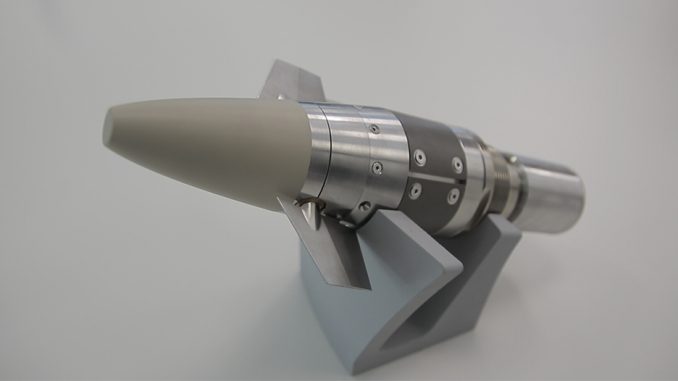
Four years ago, the Madrid company Escribano Mechanical & Engineering (EM&E) began working on a unique project in our country: the design of guidance kits that can be used in both rocket ammunition and artillery and mortar projectiles. Since then, the dozens of people working on the FGK (Fuze Guidance Kit) program have made significant progress and surpassed numerous milestones. Without going any further, on June 7 we had the opportunity to attend, at the Torregorda Test Center (CET), dependent on INTA and located on the outskirts of the city of Cádiz, the launch of five 155 mm projectiles equipped with as many guided fuzes. The results of the tests, which were a resounding success, achieving a precision impossible to achieve without these kits and demonstrating the reliability of the design, allow the promoters of this initiative to have great hopes. A bet that, if completed as the company hopes, will allow Escribano to compete face to face with foreign manufacturers in a segment with growing demand. As long as they manage to produce these kits at an attractive price.
The FGK program dates back to early 2017. It was born with the intention of developing a guidance kit for projectiles and rockets that was competitive, both in precision and price, capable of being exported and whose technological sovereignty rested entirely in Spain. Unlike what happens with other famous – and very expensive – G-RAMM (Guided – Rocket Artillery Mortar and Missiles) systems, such as the well-known M982 “Excalibur” from BAE Systems and Raytheon, the “Vulcano” from Leonardo or the “Krasnopol ” Russian, what the Alcalá de Henares company intended was to offer an economical alternative that could be used with the ammunition in service. To do this, they set out to design a series of kits that would allow ordinary munitions to be transformed into guided munitions.
Of course, no one pretends that this is new, since there are several models of guided fuzes or CCF (Course Correction Fuze) in service, such as the M1156 used by the US Army - whose acquisition our Army has recently approved - or the TopGun from Israel Aerospace Industries. However, the possibility of having an entirely Spanish product was and is something new, as are some of the proposed solutions. Furthermore, the FGK Program has the advantage of offering, based on the same basic technology, two fuze models adapted to:
- Rockets and MLRS: In this case they can be coupled to rockets between 120 and 300 mm such as those used by systems such as the extinct Teruel of our Army (25 mm MC140). Also to models such as those used by the BM21 Grad or the Brazilian Astros II - perhaps the most interesting fact for Spain, waiting for what finally happens with the SILAM program-. It has four control surfaces, two of them much smaller in size, as can be seen in the images.
- 155mm projectiles and mortars: Using a standard thread (2-12UNS-1A) it can be integrated into projectiles that comply with the standards adopted by NATO, such as the ER02 and M107 projectiles manufactured by Expal and used in the M-109 and SIAC in service with our Armed Forces. Trajectory correction is carried out using two fins instead of four, as is usually the case.
The development process has been far from simple. Along the way, the company's engineers have had to refine the design of the fuze and control surfaces, as well as all of its internal components, including the mechanism that makes detonation possible, a dual guidance system (inertial + GPS) with their corresponding antennas (the system is compatible with GPS, GLONASS and Galileo). Also, of course, the electric motors that allow the angle of the fins to be varied, the batteries that power them, the processing equipment, the telemetry systems to be able to carry out the various tests, etc. Most importantly, each component of these kits, especially those intended for projectiles, must be able to function in extreme conditions.
The 1 of January of 2019 the project would be chosen after evaluating the proposals received by the Technological Observation and Prospective System (SOPT) of the General Subdirectorate of Planning, Technology and Innovation (SDG PLATIN), as one of the recipients of funds from the COINCIDENTE program. Of course, the resources offered by the DGAM, which is the body behind this initiative, do not cover the enormous expenditure on R&D that a project like the FGK Program requires. However, it does serve as an incentive for some companies, Spanish ones, which, due to their limited size and without state support, would have a much more difficult time innovating. This same state support has become palpable in the case of the signing of different agreements, such as the one that regulates collaboration with the INTA (National Institute of Aerospace Technology) for the «development of high dynamic INS-GPS sensor», of capital importance for the FGK Program.
Since then, both the model intended for rocket artillery and the one adapted to 155 mm projectiles have continued to be perfected, verifying on several occasions their precision and reliability at the firing range, which brings the product closer and closer to the phase of marketing. The day this occurs, and in return for the support provided, the State will directly benefit from each export contract, obtaining interesting royalties. Until that time comes, however, there is still a lot of work to be done not only in terms of the maturation of these designs, but also the parallel programs that the company has launched that will directly benefit from advances in control. of flight achieved by the FGK Program, in the case of guided bombs for small caliber aviation, which we will talk about in the future.
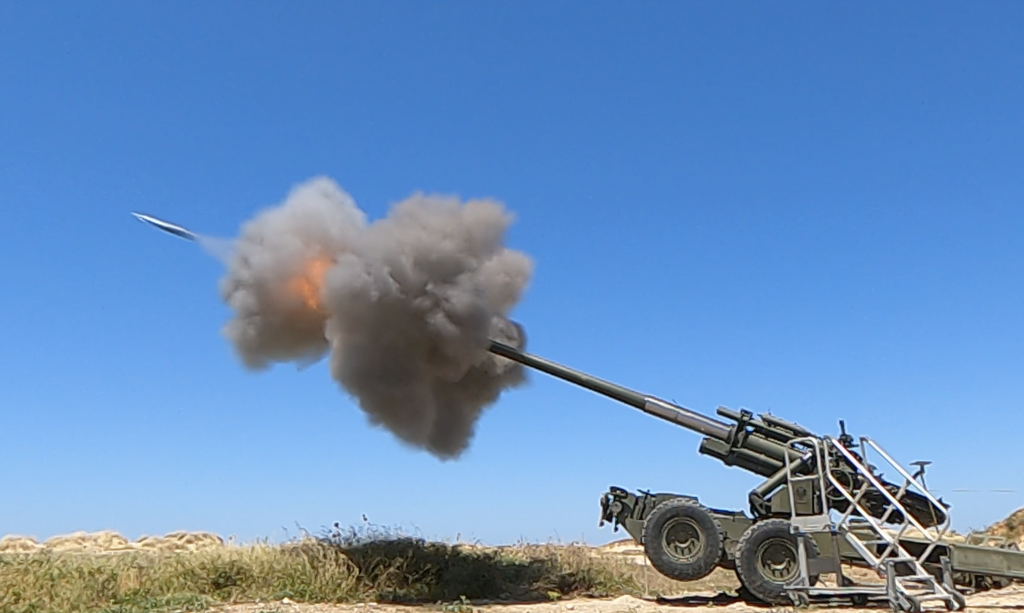
Is the FGK Program necessary?
In recent years, as we have seen in the Donbas War or as can be gathered from the latest Russian acquisitions (Magnolia, Koalitsiya-SV, Lotos…) and American developments –let us explain here-, artillery is increasingly becoming the determining weapon on the battlefield.
Perhaps the most important advance has to do not so much with improvements in range and precision as with the generalization of ISTAR (Intelligence, Surveillance, Target Acquisition, and Reconnaissance) means, especially in the form of RPAS (Remotely Piloted Aircraft System), capable of collecting data related to the location of possible targets in real time and transmitting it to both headquarters and units on the ground, acting as true multipliers for the gunners. As Commander Juan Ignacio Fernández González explained:
“The use of RPAS in the IFS (Indirect Fire Systems) of DIV/CE allows obtaining information at the right time and in the right place, thus contributing to the increase in long-range and precision fire support capabilities for organizations.” higher order operations. Its great operating distance and autonomy, much greater than with other means of acquisition, such as advanced observers and ground-based radars, provides decision-making bodies with the ability to acquire targets at depth (up to 300 km), with discrimination power and great precision. (even in rockets and missiles), high rates and variety of ammunition types.”
All of this, logically, offers a series of possibilities that simply did not exist long ago and that, to be taken advantage of, require the development of PGMs (Precision-guided munitions) or kits that allow the conversion of traditional ammunition into these, as as proposed by EM&E through the FGK Program.

There are other reasons that also contribute to this new golden age of artillery. As we explained in its day when talking about Multidomain Battle and the future battlefield o of the USAF ABMS system, it could perfectly well happen that North American and European ground forces would be forced to operate in an operational environment in which it was no longer possible to enjoy air superiority. This could happen, for example, if there were a direct confrontation with Russia. In this case, the superior range of the Russian artillery systems could no longer be countered by Western aviation and they would have to operate with the great disadvantage of being able to be defeated by the Russian artillery without having the capacity to fire counterbattery. leaving themselves defenseless and suffering heavy casualties, just as happened to the Ukrainian forces during the Donbass war. This, which is applicable to a large-scale confrontation, can be extrapolated to many other smaller scenarios and to players with much fewer resources than the great powers, including, for obvious reasons, also their proxies.
Even in scenarios where it is possible to guarantee air superiority, it will not always be advisable to carry out air-to-ground attacks, if only for reasons of cost. In the end, the price of air-launched guided munitions, added to the cost per flight hour of the plane that must transport them, turns out to be higher than that of artillery munitions, especially when the ranges have not stopped growing in recent decades and, Today, it can be hit at distances that were unthinkable just a few years ago. Furthermore, it also does not seem logical to risk the life of a pilot or suffer unnecessary attrition by exposing an aircraft, or even a UCAV, when the same can be done from a howitzer with some safety.
In conclusion, there is a generalized pressure to have artillery systems with greater range and precision, especially in relation to conventional artillery and rocket artillery, since surface-to-surface missiles follow a different logic due to their cost and strategic nature.
The big problem, when we talk about howitzers, both self-propelled and towed, or rocket launchers, is that, although it is relatively easy to achieve greater ranges, for example, through the use of rocket-assisted ammunition in the case of projectiles or By increasing the caliber, the precision follows a logic inversely proportional to that of the range, unless some type of guidance system is used. The reader should bear in mind that the range of the 107 mm M155 projectiles was just 14,5 km with the M4A2 "White Bag" propellant charge, a figure that in the M795E1 rose to 28,5 km with the M203A1 charge. At these distances, the precision achieved solely thanks to the shape of the projectile itself and the benefits of the shell from which they were fired allowed acceptable precision, around 50 meters, still in line with the lethal radius of the explosive charge. In other words, although there was a certain and inevitable dispersion, this was more or less acceptable. However, it forced the use of an exaggerated number of ammunition depending on the target to be hit, as demonstrated by simulations such as the one we share below.

However, since then the ranges have multiplied without advances in the ballistics of the projectiles or the improvement of the tubes being able to compensate for the increase in dispersion. Thus, for example, Expal's ER02A1 projectiles with 6 projection charge modules launched from a 52-caliber SIAC-type howitzer are capable of hitting targets at distances of up to 40 km. The German Rheinmetall, together with the South African Denel, is working with its sights set on achieving ranges of up to 83 kilometers, for which there is no way to achieve an acceptable CEP (Circle of Probable Error) without some guidance system, since the dispersion between The different impacts are on the order of hundreds of meters and the lethal radius of these munitions still does not exceed a few dozen. Let us consider that a commonly used projectile such as the rocket-assisted M549A1 and with a range of “barely” 30 kilometers if launched from an M198 howitzer, has a CEP of 267 meters, which this implies not only in terms of difficulty in cause harm, but also given the possibilities of causing friendly fire incidents or causing collateral casualties.
Something similar happened, in this case speaking of rocket ammunition, with the MC25 that our Teruel used, whose original dispersion was in figures of the order of 800/1.000 meters at distances of less than 25 kilometers. Of course, no one intends to achieve direct hits with ammunition of this type. In fact, its reason for being is to defeat concentrations of unprotected forces such as departure bases, defensive positions, bridgeheads or landing sites, logistics centers, etc. Also for neutralizing or prohibiting the use of armored or mechanized forces, hindering or preventing their movement, carrying out counter-battery fires, neutralizing or preventing the use of anti-tank and anti-aircraft defenses, carrying out concealment or blinding fires over large areas of the battlefield. , etc. However, a certain precision is also desirable and, in fact, essential, since the ranges do not stop growing in the case of rockets either and it is not necessary to imagine, if at 16 or 18 kilometers the CEP of the MC25 was close to what we have explained, what it could be in rockets that must travel distances four or five times greater, if not ten. In summary, there is an important gap between the need to achieve greater ranges and the benefits that these provide if they are not accompanied by corresponding precision.

The solution, in all cases, is either to acquire guided munitions, with their stratospheric cost - which limits their use to high-value targets or exceptional situations - or to obtain PGM kits that partially alleviate the cost problem. . Be that as it may, the difference in precision between conventional and guided munitions is abysmal, as can be seen below.

It is therefore understood the need to acquire or develop guidance kits if we intend to get the most out of the howitzers and launchers in service, which leads us to another issue that also explains the interest of the MALE (Army Logistics Support Command) and the DGAM (General Directorate of Armament and Material) for this type of projects and about which we have spoken on numerous occasions: technological sovereignty.
As we know, Spain is a manufacturer of howitzers, such as the SIAC (Integrated Field Artillery System) 155/52 designed and manufactured by GD-SBS. Also ammunition, thanks to Expal. In this sense, the need to design fuzes that allow optimal use of what we manufacture and keep in service is obvious. If we add to that the possibility of the Ministry of Defense directly benefiting from each possible order destined for export, there is very little to add.
Likewise, some time ago Spain came to accumulate important experience in the design and manufacture of rockets, at least until the termination of the Teruel launchers in 2011. Today, as we know, it is difficult for our Ministry of Defense to embark on a similar adventure again, since nothing would justify the investment in a development with zero possibilities of being sold abroad and of which the Army barely needs a handful of units. Taking the above into account, the most logical option is to purchase a system abroad that is as affordable as possible and susceptible to modification. Most importantly, a system in which we can employ our own ammunition. We are talking about rockets that, as GD (R) Manfredo Monforte explains, could be nationally manufactured and “from the “Spanishized” rocket, develop fuzes and guidance systems that reduce the dispersion circle as well as evolve the rockets on a Spanish industrial base to have new versions with greater range, power and precision” .
This is where the EM&E FGK Program comes in. Although it is not the only one in Spain, as companies like Everis have made their attempts with the Miura system and others like Expal also have developments underway, it does seem to be the most advanced and the one that has achieved the best data to date in terms of precision, averaging a CEP of 30 meters for rockets and less than 20 in the case of 155 mm projectiles.
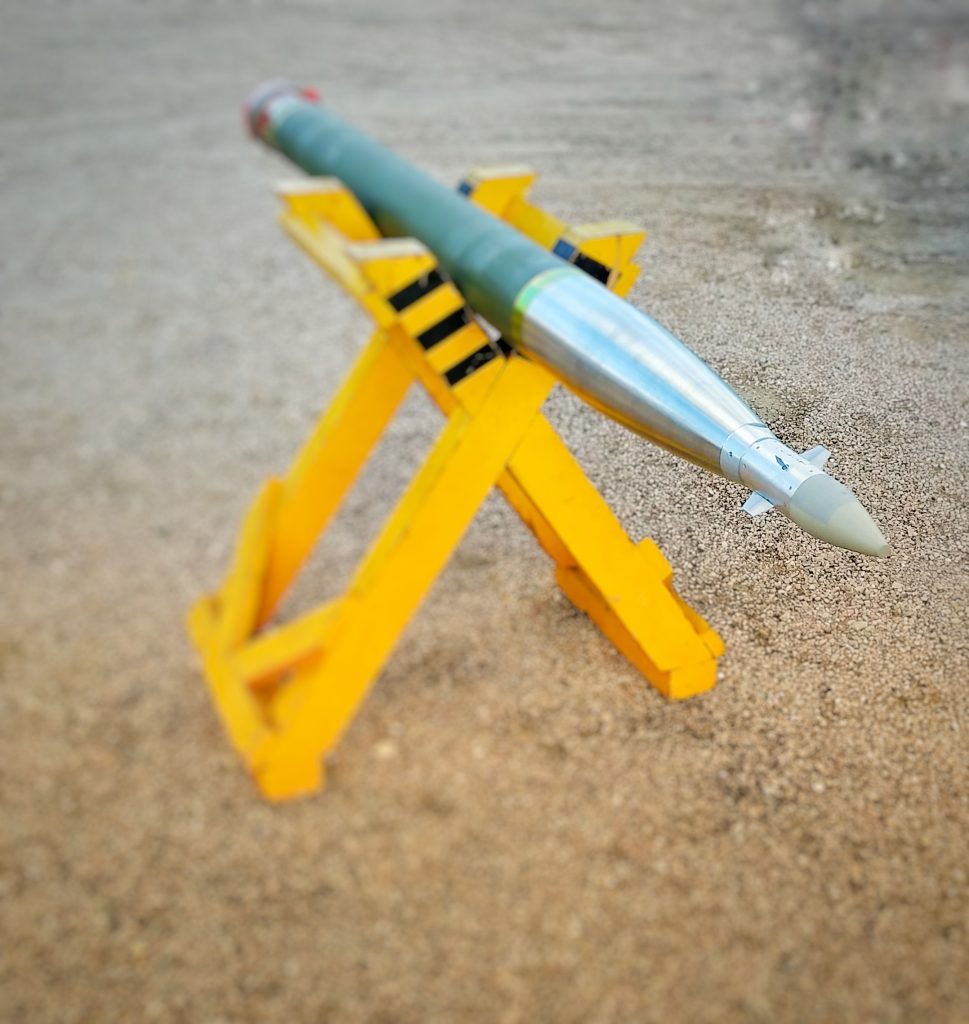
A simple idea, a complex development
As the title of this section states, the idea behind the FGK Program is relatively simple. By replacing the traditional fuze with another equipped with a guidance system and control surfaces, the projectile, instead of following a ballistic trajectory determined by its momentum, its weight, its aerodynamics and external conditions, will be able to correct its course. during flight, thus increasing its precision. In this way, once the apogee of the flight phase has been reached and the location and height of the projectile has been determined and also knowing the position of the target, it is possible for the fins to guide it as close as possible to it, reducing the CEP in a way remarkable. This is done because what is sought is not to increase the range of the ammunition by introducing surfaces that allow the projectiles to "glide", gaining a few hundred meters or a few kilometers compared to those that lack these, but solely and exclusively to influence the precision. . The opposite would require a much more complex and, therefore, expensive design.

The latter is important, since it is not about converting the projectile into a kind of missile, capable of hitting a specific target with complete accuracy, but rather about grouping the shots better, reducing dispersion, increasing the probability of becoming effective at the first or second shot and, with it, reducing collateral damage, chances of receiving counter-battery fire and wasted ammunition. In relation to the latter, it is worth mentioning that one of the big problems that our military must deal with has to do with the difficulties when supplying artillery units with the adequate volume of ammunition. This is done at a huge cost given their volume and weight, so that, to the extent that consumption is reduced, thanks to greater effectiveness, significant savings will be achieved.
The key factor, however, is price rather than precision, since what is sought is an unbeatable option in terms of cost/effectiveness. Thus, through kits such as the FGK from EM&E it should be possible to adapt conventional ammunition to bring them closer to the characteristics of other designed ones. on purpose, like the aforementioned “Excalibur”, but at a fraction of the price. As a guideline, although the company is reluctant to talk about the cut for obvious reasons, we have been able to know that the price of its kits added to the associated ammunition ranges between 6 and 8 times lower than that of the “Excalibur”. Figures that are in line with what we see in the international market. For example, In 2018, the Netherlands requested the DSCA to purchase 70 M3.500 PGK kits, worth $1156 million., which gives a unit cost of about $20.000 per fuze. The same country, last year, requested the same US agency for approval in order to obtain a batch of 199 “Excalibur” projectiles for its PzH2000NL, as well as various associated equipment, for 40,5 million dollars, that is, just over 203.000 dollars per shot. As we see, although we insist that these are indicative data, since many complementary factors are usually included in these agreements, we are talking about a cost ten times higher in the case of the “Excalibur”, which would be partially reduced if the cost of the M1156 PGK kits we add the projectile in which they are embedded. A projectile, by the way, that in the case of Expal's ER01 can approach 5.000 euros per shot.
Now, if, as we have said, the idea is simple and is inspired by systems in use for a long time, as is the case of JDAM (Joint Direct Attack Munition) kits, which incorporate into the free fall bombs (Mk-82, Mk-83...) a GPS reception system and a tail with mobile fins that allow increasing precision, making it a reality is another matter. It is, among many others, for the following reasons:
- Reduced size: The first challenge has to do with the limited space available inside such a fuze. The JDAM type kits, as can be seen in the images at the end of the section, have a considerable size, in accordance with the size of the pumps in which they must be installed. This makes it easier to house the reception and processing equipment, the actuators that move the control surfaces (canards, fins, flaps...), the batteries and the antennas inside. In the case of the FGK Program, the kit barely weighs 1,5 kg and has a size of around 300 x 100 mm including the control fins, all of which requires significant miniaturization.
- Structural resistance: Coupled with the above, a limited volume forces the components to be weaker, since their thickness must be reduced as much as possible. This forces engineers to go to the limit, since the kits, in the case of fuzes for 155 mm projectiles, must overcome forces greater than 18.000G and speeds of more than 950 m/s.
- Need to receive data and process it in real time: The antennas must be able to survive the enormous pressures and speeds that occur inside the tube and receive data in real time. Subsequently, this data must be processed and transformed into orders for the actuators. All this adding, furthermore, that, due to the grooves in the tube, a 155 mm projectile such as Expal's ER02A1 rotates around 200 times per second during flight, subjecting the assembly to significant centrifugal forces. Furthermore, in the case of fuzes intended for testing, they must be capable of transmitting various data via telemetry, which represents an added problem.
- Minimize the impact on the scope: Guidance kits, whether for rockets or artillery projectiles, offer a certain aerodynamic resistance, which is greater the larger the control surfaces or the more numerous they are. For this reason, engineers must strike a balance between the need to incorporate larger surfaces (which increases control over trajectory) and not compromising the maximum range of the ammunition.
Taking all this into account, the options to be evaluated by the engineers of the Madrid company were many, as many as there are types of control technologies, Well, there are several alternatives. Thus, for example, control systems based on drag brakes have been developed such as the German TCF (Trajectory Correction Fuze) or the French SPACIDO (Système à Précision Améliorée par CInémomètre DOppler). For its part, the Israeli IMI has been working on fuzes with spin brake control systems, called TopGun, and there are even mixed systems that combine both options, something that BAE Bofors has tried. In the case of the EM&E FGK Program, the option chosen has been to combine a decoupled rotation system, which allows the fuze to act independently of the rotation of the projectile, with two mobile fins linked to separate electric motors that make possible the control over the trajectory.



The same for the materials, although in this case, far from esoteric solutions, steel has been chosen for the most part, a material that the company can machine at will. The bow cone is made of a special plastic compound that offers sufficient protection to the rest of the components, but does not interfere with data reception. Most of these components are produced by the company itself, which carries out everything from the machining of the different sections to the wiring and from this to the printed circuits. The only important exceptions are related to GPS receivers and telemetry system antennas, as well as batteries and electric motors, since they are much cheaper to purchase on the market. Of course, the flight control software is self-developed.
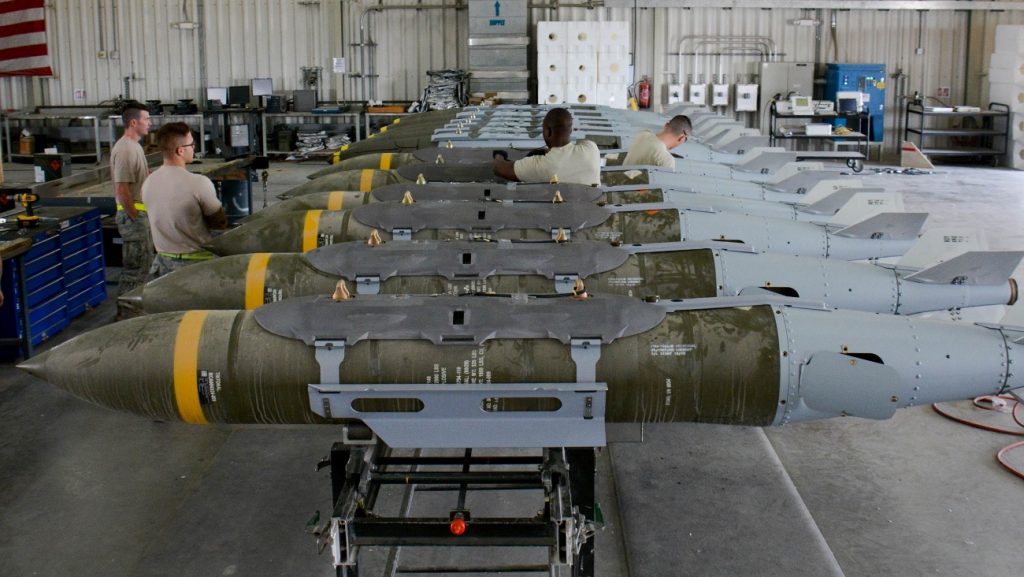
Some promising tests
As we have explained, the FGK Program dates back to 2017. Since then, different simulations and laboratory tests have been carried out, but also shooting tests in facilities such as CEDEA (El Arenosillo Experimentation Center) in Huelva or the Testing Center of Torregorda (CET), in Cádiz.
Precisely in May of this same year, tests were carried out in El Arenosillo with the MC-25 rocket in which it was demonstrated that, consistently, the dispersion was reduced from between 800 and 1.000 meters to only 30 meters thanks to the new wishbone.
Just a few days before, on April 28, the company's engineering team was able to present its project to H.M. the King at the CMT (Maneuver and Shooting Range) “Álvarez de Sotomayor”, located in Viator, Almería.
Already in June, in Torregorda, they also managed to demonstrate the good performance of their design on 02 mm ER1A155 projectiles, compared to the same inert projectiles equipped with a mechanical type fuze, which had been tested shortly before - specifically on May 20. in the same facilities to compare performance with and without the EM&E kit. Even though, as we have said, the precision of these projectiles at distances of up to 20 km is in itself acceptable, during the tests, in which targets were marked at 23 km (for convenience of measuring the drop point with the available means ), the use of the trajectory correction fuze allowed for a noticeable improvement in precision.
The tests, as usually happens in these cases, were attended by a delegation from the Army, made up of a division general, several colonels and some commanders both belonging to the Artillery arm and coming from the Engineers. At his side we had the opportunity to receive a comprehensive explanation about the operation of the kit from David Galindo, the chief engineer of the FGK Program, who was kind enough to resolve some of our doubts as they arose and as a way to liven up some tests that , as usual, are quite tedious because they are monotonous. Of course they couldn't respond to everything and that is understandable, since companies always want to protect their secrets, but we will continue to insist in the future.
Regarding the tests, as usual, they were quite tedious because they were monotonous, and consisted first of all of a control shot without a guiding fuse from the SIAC that the Artillery had provided for this purpose. Subsequently, at intervals of around 45 minutes, the rest of the shots were fired, all of them already with the EM&E fuze and testing with different propulsion loads, until reaching the maximum allowed, since the intention, rather than checking the precision , involved ensuring that all systems survived the flight and functioned correctly. This involved transmitting its position once it reached the apogee of its trajectory, receiving data from the GPS network, checking the operation of the actuators, etc. All of this was controlled in real time by a helicopter, which flew at a safe distance over the expected point of impact, out to sea, to take data on the precision and verify that the projectiles reached the demarcated areas.
The reason for waiting so long between shots had to do with the work of the engineers. After each test, they had to do a preliminary analysis of the data obtained and ensure that all subsystems had worked correctly. In turn, before each shot, the fuzes were connected via a data bus to a laptop computer in which a control program made it possible to verify that each part of them responded as expected. In the same operation, it was used to enter data from the SIAC fire control system. The latter is something that in the future gunners will be able to do on the fly and in much less time through EPIAFS (Enhanced Portable Inductive Artillery Fuze-Setter) type equipment, but in tests like these it is advisable to do it slowly.
Once the round of shooting was completed, the staff at the Torregorda Testing Center had to compile all the information collected by the various sensors (radars, equipment mounted on the helicopter, video cameras...), which they would later make available to the company. , but which from the first moment pointed to a significant improvement in precision. Of course, this cannot be confirmed until tests are carried out at greater distances, precisely where the work of the guidance kits is most noticeable. Be that as it may, the important thing is that the tests allowed us to discard some of the engineers' greatest fears, since the kits managed to withstand forces above 17.000 Gs without fail, the around 18.000 rev/min to which they were subjected during the phase. of flight and a muzzle speed greater than 950 m/s without stopping transmitting or receiving data and without recording any setbacks.
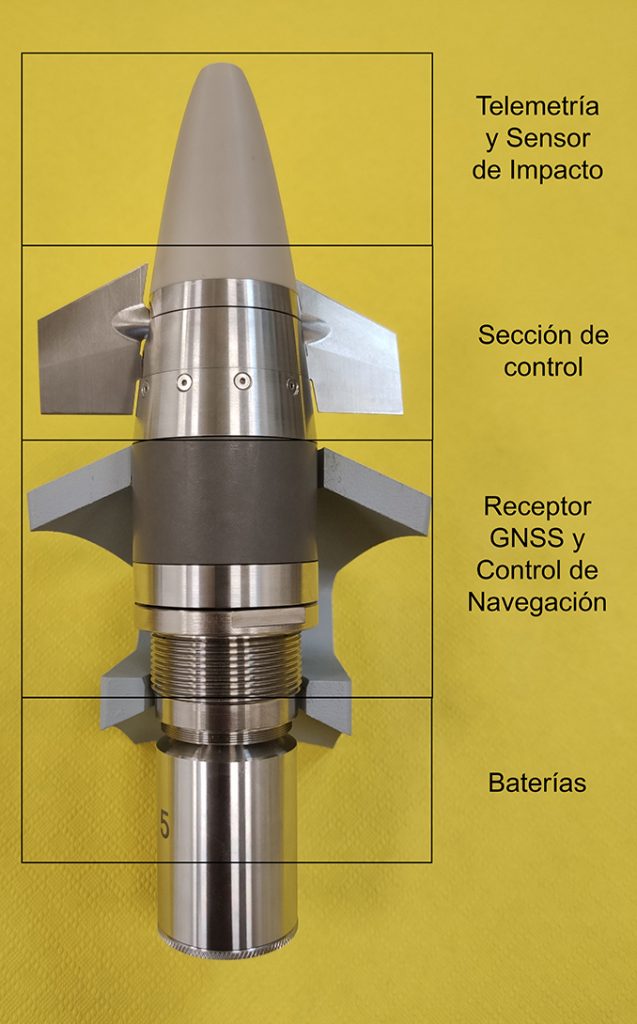
FGK Program: Looking Outside
As we have been anticipating, EM&E has had its sights set on the export market from the first moment. Of course, the company wants the Spanish Ministry of Defense to be the first client of the FGK Program, but no one is aware that, even if our Army acquired these kits in significant quantities - by our standards - the volume total that could be purchased would continue to be reduced. In addition, there is another added and important factor and that is that this type of products, due to their characteristics, benefit greatly from economies of scale, so the more kits that are manufactured, the lower the unit cost will be, hence that export is once again a necessity.
Looking at the international market, being a completely national development, these kits have the enormous advantage of not having to submit to the ITAR (International Traffic in Arms Regulations), which involves the United States Export Law and controls defense articles and services. As we know, any weapon, weapon system or platform that includes sensitive components of US origin is subject to these regulations, with the consequent limitations regarding export and, where appropriate, use by the buyer, something that we have seen in numerous cases. occasions. This is a handicap in many cases, because depending on the needs of US foreign policy, exports to certain destinations can be vetoed, sometimes due to trifles, and it is enough for a system to contain a US component for the sale to be made. could be aborted by Washington's decision. In the case of Escribano's guided fuzes, they will have total freedom in this sense, logically complying with Spanish and Community regulations in this regard.
In any case, everything indicates that its export will be a success and time can only play in its favor, since the scope continues to grow. In a world in which all armies with a minimum of possibilities are doing everything in their power to equip themselves with extended-range projectiles that reach distances that double or triple those initially planned and in which we see how rocket artillery is also returning to be “in fashion”, the need for these wishbones is obvious. What's more, as far as we have been able to know, there are already several interested clients, coming from the company's usual markets.
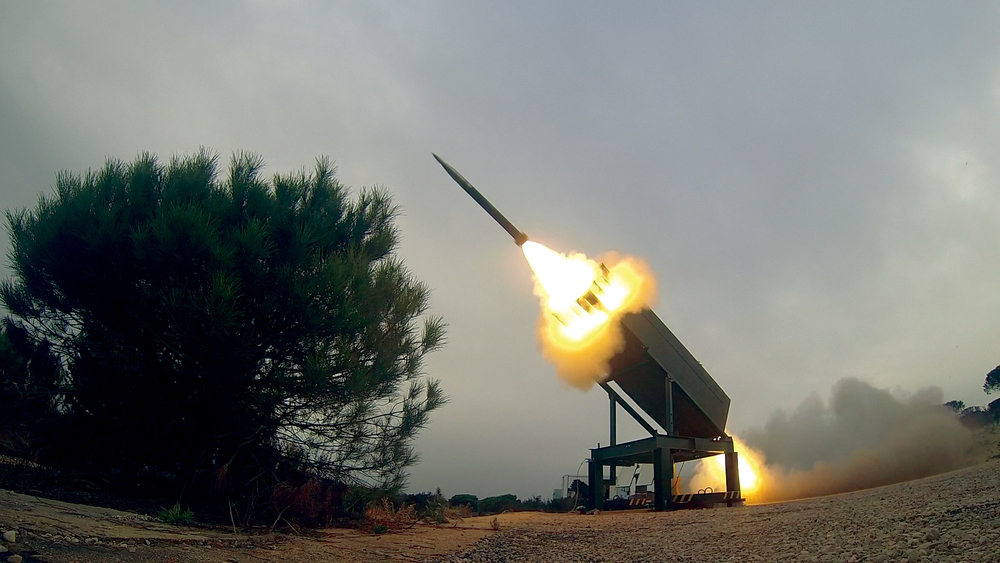
Conclusions
As we have seen, the battlefield is and will be, increasingly, characterized by artillery exchanges, also produced at increasing distances. Given the physical limitations that affect the precision of projectiles, the only way to achieve acceptable dispersion in the case of both classical artillery and rockets is to acquire guided projectiles or adapt guidance kits such as the proposed by EM&E through its FGK Program.
In the Spanish case, given the tradition that we treasure in terms of manufacturing howitzers and ammunition, it is essential to contribute to the development of nationally produced guidance kits that allow us to cover the needs of the Armed Forces. Also that make it possible for the Spanish defense industry to remain competitive in an export market that, ultimately, It represents 81,3% of the turnover of the defense sector in Spain. Most importantly, we cannot afford to continue neglecting one of the few segments within the defense industry in which we are still autonomous, namely munitions., something that unfortunately we have done in recent years, with several notable closures and sales of facilities. In this sense, the Ministry of Defense should support more initiatives such as EM&E, but not only , since there are several Spanish companies working on extremely interesting projects.
That said, the FGK Program promises to square the circle, offering a national product, a competitive price and features that do not seem to lag behind those offered by the competition, if what the tests indicate is confirmed. It's not little.


Be the first to comment